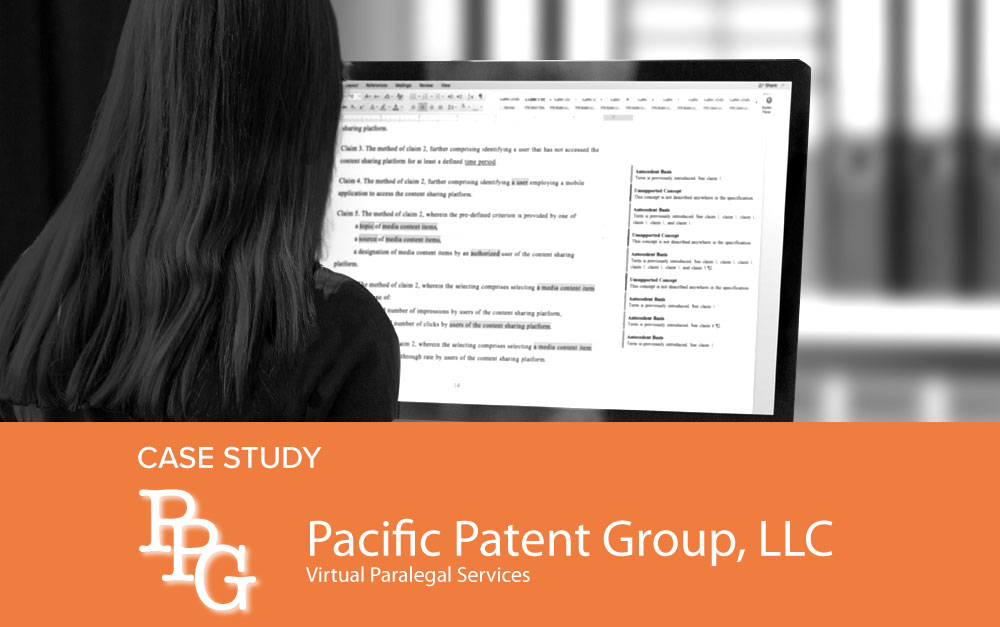Automating the Patent Process — A Case Study
The patent process is often long and costly, full of repetitive, time-consuming, and tedious tasks. Errors occur far too frequently. These factors make it highly suitable to gain improved efficiency and quality through automation.
As an example, each year, the USPTO reviews hundreds of thousands of patents, from which it generates over one million Office actions — calls to modify, accept, or reject the decisions of a patent examiner. Legal organizations dealing in patent law can receive hundreds of these Office actions every month. That means a lot of administrative work.
Experienced paralegals spend 30 minutes to two hours on each Office action, drafting, formatting, and reviewing response documents (shells). These shells are forwarded to patent attorneys, who fill them out by inserting legal arguments, and finally, back to the USPTO for further review. Several responses are typically required, until a patent is finalized or an applicant abandons the pursuit.
In an effort to streamline this process, TurboPatent, a company specializing in IP automation, created SmartShell. Combining predictive analytics, Natural Language Processing (NLP), and artificial intelligence, SmartShell automates the process of generating Office action response shells.
To be clear, SmartShell doesn’t replace an experienced patent attorney or paralegal, but it can assist in completing much of the work associated with producing an Office action shell in a more efficient and higher quality manner. Over the course of a year, a paralegal working for a busy firm can save literally hundreds of hours worth of time.
That’s a bold claim, but it’s one backed up by a recent test. In an effort to assess just how much efficiency automation can provide, experienced paralegals Holli Templeton and Josi Bridges from Pacific Patent Group put SmartShell to the test.
 The two paralegals each handled several Office actions. First, they used the traditional, manual methods they had relied on throughout their careers. Then, they repeated the process using SmartShell. Throughout the test, they itemized, tracked, and timed each aspect of their work.
The two paralegals each handled several Office actions. First, they used the traditional, manual methods they had relied on throughout their careers. Then, they repeated the process using SmartShell. Throughout the test, they itemized, tracked, and timed each aspect of their work.
The results were impressive. Overall, when using SmartShell, the two paralegals were able to accomplish the same tasks in only one-fifth of the time as compared to manual methods.
Some tasks in particular were well-suited to SmartShell. When it came to retrieving documents and bibliographic data, inserting case-specific data into the shell, reviewing examiner remarks, and identifying rejection issues, SmartShell improved paralegal productivity by as much as 800%. In fact, SmartShell was able to accomplish many of these tasks so quickly that they were difficult to measure.
Notably, these improvements in productivity came after only minimal onboarding and very little training with the software. Prior to the test, neither paralegal had used SmartShell. It’s reasonable to assume that, given more time and experience with the software, both may have enjoyed productivity gains well in excess of the 500% they experienced.
Perhaps most importantly, both paralegals were exceptionally pleased with SmartShell’s output, remarking that it was every bit as high quality as their own manual work, and that it would meet or exceed their client’s expectations.
“Now that I’ve had the chance to use SmartShell,” Holli Templeton said, “I can’t imagine handling responses any other way.”
The shell generation process is just one example of how automation can offer improved efficiencies throughout the patent process. By leveraging technologies like SmartShell, forward-looking patent firms and companies can be more competitive and deliver even greater value to their clients.



